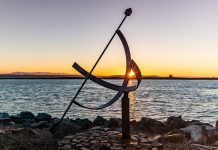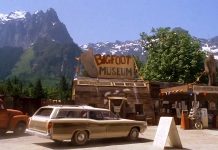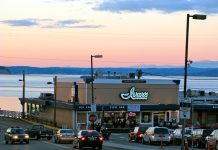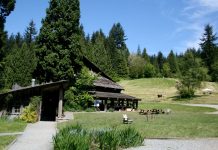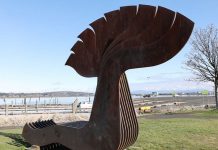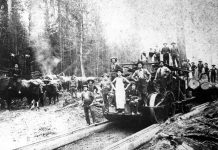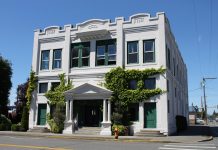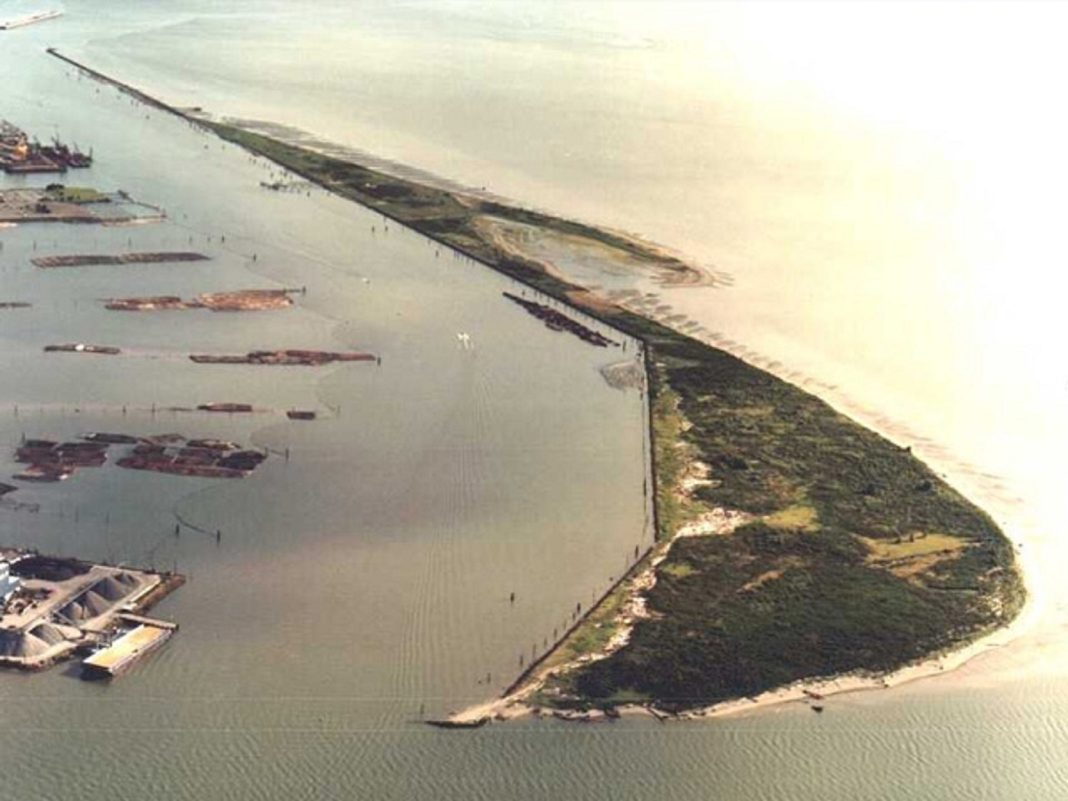Nestled off the coast of Everett’s crystal clear waters is a hidden waterfront gem that offers the longest sandy beach in Puget Sound with an abundance of untouched natural beauty. It’s the perfect little spot to bask in the sun, play in the sand, and swim in the warm shallow waters, and it can all be experienced at the Port of Everett’s one and only Jetty Island! Steeped in history and boasting an array of amenities enjoyed by visitors and locals alike, this man-made island has become a cherished destination throughout the Snohomish community.
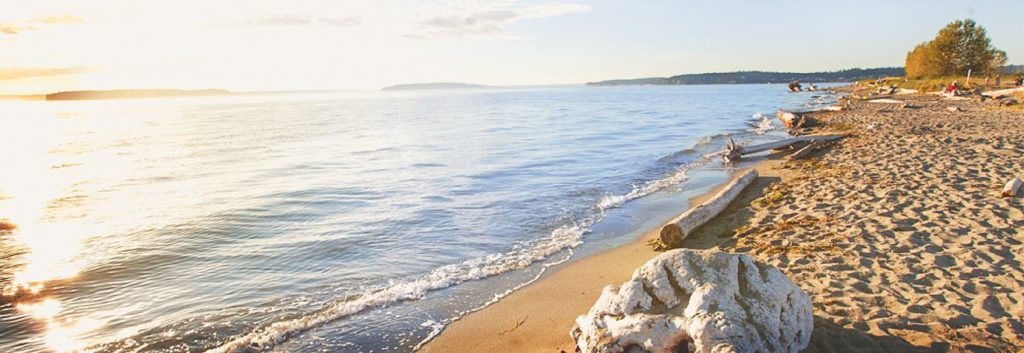
Planning the Creation of Jetty Island
The island’s origins can be traced back to the late 1800s when the Snohomish River and its surrounding waters played a significant role in the region’s maritime industry. Everett’s early settlers recognized that the nearby Port Gardener Bay had excellent potential to be developed into a harbor. The only question was where to start.
Luckily, Tacoma lumberman Henry Hewitt stepped up to make this dream a reality for Everett’s early settlers. He arrived in the spring of 1890 to explore the area for the Northern Pacific Railroad. Once exploring the area, he realized that the site had great potential, but he would need more help from a partner to make the future Jetty Island possible.
After learning that Charles Colby, an associate of the wealthy industrialist John D. Rockefeller, was looking for a location for the western branch of the American Steel Barge Company, he was able to set up a meeting with the businessman and managed to convince Colby that Everett was the place he should set up shop. With the financial aid of Colby and Rockefeller, Hewitt was then able to purchase the land holdings of local settlers to start work on the harbor.
From there, Hewitt, along with Colby and one of his partners, Colgate Hoyt, as well as the Rucker Brothers, who Hewitt originally bought part of the land from, would come together in November of 1890 to form the Everett Land Company. Together, they would acquire the additional property needed to develop the waterfront and build a harbor that aspired to rival anything on the West Coast.
Early drawing plans created around 1890 envisioned a large harbor protected by a jetty that blocked the flow of the Snohomish River as it exited into the bay and channeled it into the harbor. The goal was to have the jetty act as a navigational aid and protect the entrance to the river while facilitating safe passage for vessels.
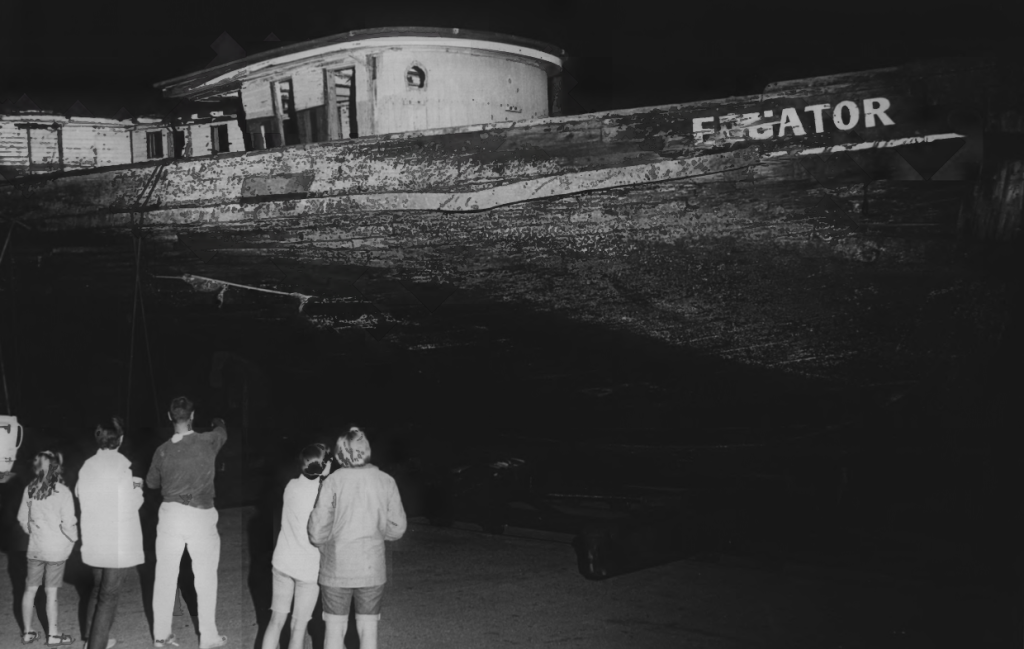
Troubles and Construction Woes Threaten to Impede the Creation of Jetty Island
Now that a plan was in motion, all that was left was for the Land Company to buy the remaining tidelands, which proved to be more difficult than anticipated. Litigation ensued and wouldn’t be resolved until early 1893 in favor of the Land Company. All those took place just a few months before the financial Panic of 1893, which kicked off a severe depression which lasted for much of the rest of the decade.
Nevertheless, the Land Company moved forward with its plans for a harbor, gaining approval from the U.S. Government to proceed at its own expense by the end of the year. However, despite their approval, Hewitt still needed federal funds for the job and ended up spending part of 1894 lobbying the federal government for funds to dredge the harbor and build a “training dike” in the bay in front of the harbor to protect it. With the crisis of the depression ongoing, the federal government wouldn’t be able to approve funding and provide plans and specifications for the harbor and jetty until the spring of 1895.
Eventually, construction began in the early summer of 1895; between then and November, almost 8,000 feet of the jetty was built, stretching southwest from Smith Island and in front of the mouth of the Snohomish River. Its creation wouldn’t be without its challenges as a double row of piles were laid and filled in with brush, but the brush wasn’t anchored and soon began blowing away whenever there was a breeze. After a while, crews learned to put rocks on the bush to keep it in place.
As winter came, work had to be paused in November and resumed a year later, during which time excavated soil from nearby dredging work was used to build up the west side of the jetty. By late 1897, the jetty was 14,000 feet long when work was ceasing yet again.
At the time, the original plan had been to create tidal gates in the harbor to help keep it free of silt. Due to the recent economic crisis, the government had instead opted for a less expensive option and eliminated the gates in the final plan. This would prove to be a costly mistake; as the jetty began to block the flow of the Snohomish River as it exited into the bay, silt and debris from the river began flowing into the harbor and depositing along the shoreline. As the 1900s began, repeated dredging to combat the issue was proving to be costly and futile, and by the 1910s, it was becoming obvious that it wasn’t working, and it was time to rethink the problem.
Previously the issue had first been addressed in 1902 when a large opening, subsequently named Steamboat Gap, was cut out of the jetty in front of the mouth of the river to allow silt and river debris to flow into the bay instead of into the harbor. Initially, it had worked, but the gap was questioningly closed again in 1910 as part of a misguided attempt to increase the river’s velocity to force the silt through the harbor channel and into the bay. As a result, the silt built up in the harbor at a faster rate than it had the first time the gap had been closed. Having finally learned from their mistakes, the gap was permanently opened in 1915 and, in fact, widened at least twice years later until it was more than 2,000 feet wide.
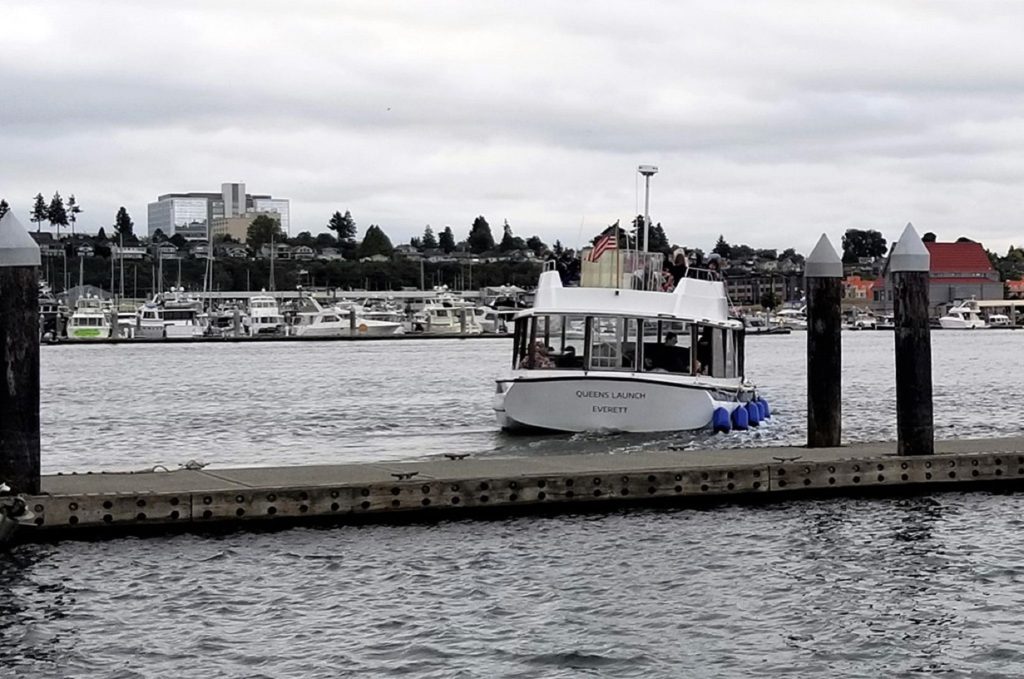
The Man-Made Island is Finally Complete and Ready for the Public
More improvements were made, and it seemed as if the island was on its way to completion. During the 1910s and 1920s, material from dredging operations and other sources was added to the west side of the island and slowly built it up. In 1912 and 1931, the northern part of the island was rebuilt to an elevation of slightly more than 14 feet, where it remains to this day. The southern 3,250 feet of the island is considerably lower as a result and barely above sea level at high tide.
Later, in 1928, Everett voters approved the Port of Everett’s purchase of several tracts of land along the Everett waterfront. This included Jetty Island, and in 1929, the port assumed ownership, but little changed on the island for the next 20 years, despite development on the waterfront during World War II.
By the late 1940s, it was becoming common to sink old barges off the island’s northern end to provide a breakwater in the harbor. Boats were also frequently left on Jetty Island during this time, including the famous Equator, a vessel that was built in 1888 and hosted the famous writer Robert Louis Stevenson on a voyage across the South Pacific the following year. Though the vessel served as part of the Arctic whaling fleet for a time after and as a tugboat on the Puget Sound in its later years, it was unceremoniously dumped on the island after its years of dedicated service in 1956, seemingly forgotten before being rediscovered and removed from the island in 1967. After, it was restored and put on display at the Port of Everett Boat Dock, where it remains today.
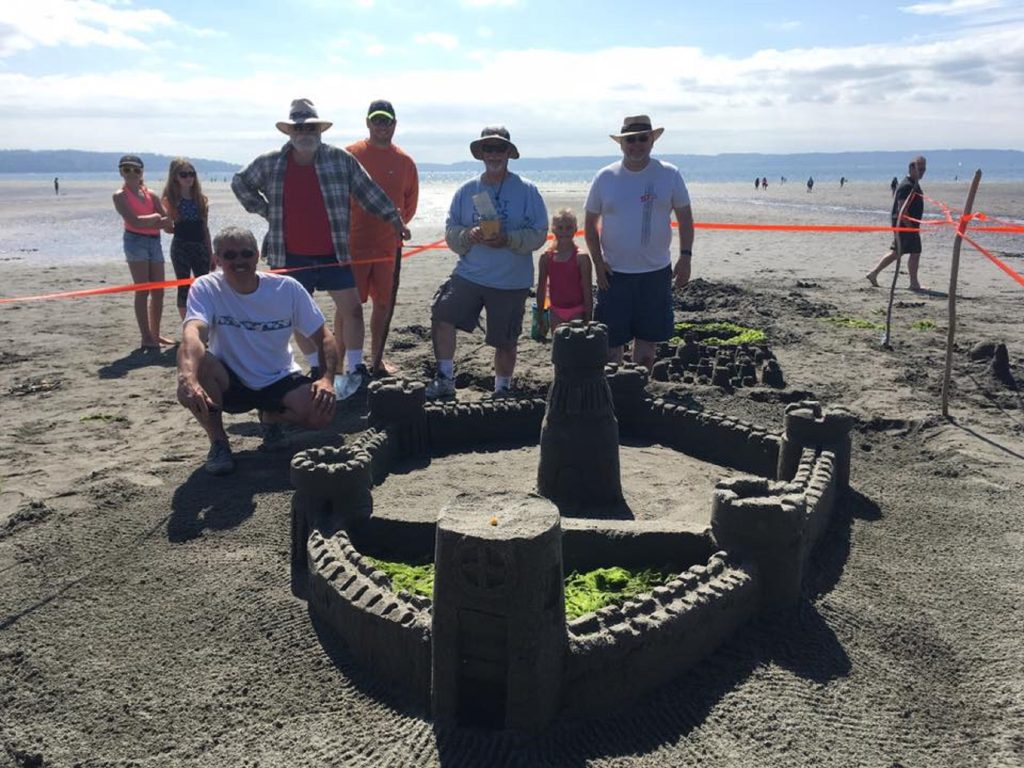
Jetty Island Transforms into a Popular Tourist Destination
As a result of this magnificent find of such a historic vessel, the island began to attract more public notice in the 1960s, with other factors playing a role as well. In 1961 the port allocated a portion of the island to Everett’s Park Board to be used for picnicking and swimming that summer. From there, recreation on the island slowly increased as both the port and the park board developed more and more small parts of the island for recreation.
Also, during this time, the port sporadically offered foot-ferry services to the island during the decade but was later abandoned during the later part of it. Still, by the 1970s, the island was growing increasingly popular with the public, and it had acquired the name it now goes by, Jetty Island.
Up until then, the island had simply been known as Everett Island after its initial creation. Between the early to mid-1900s, it was commonly referred to as “Beach’s Island,” originating from the Beach family, who owned and operated a ferry service that transported people to and from the island for recreational purposes.
With its popularity growing, Everett’s Evergreen Fourth of July Association decided to begin hosting an annual fireworks display on Jetty Island starting in 1983. It was later, in 1985, that the foot-ferry service resumed to the island for a brief eight-day period that summer. Nearly 4,000 people visited the island during those days, which ultimately led to the creation of Jetty Island Days in 1986. These days were between July 5 and Labor Day and would be the only time the Everett Parks and Recreation Department would offer free ferry rides to the island. Before long, the island was hosting sandcastle contests, “kids days,” and other programs.
Today, Jetty Island continues to offer visitors and locals alike some beachside bliss as they enjoy the sun, sand, and splashing waters. It has become an oasis for water sports enthusiasts, a naturalist’s paradise with its many wildlife wonders (not to mention being home to more than 45 bird species), and a family-fun, community gathering place with plenty of facilities and amenities, meaning there’s something for everyone!


